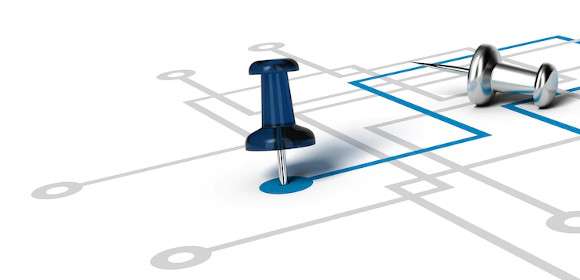10+ Goal Tracker Samples
Goals are the concepts and outcomes you envisage and want to achieve in the future. Setting deadlines and keeping track of your work will help you achieve your objectives. Setting goals is a terrific approach to improve yourself as a person and as an employee. It’s critical to keep track of your progress and make sure you’re meeting your objectives. You will watch yourself grow and flourish in both your personal and professional life as you attain additional goals. How do you track your goals? Obviously, through a tracker! You can make a great one with our help. In this article, we provide you with free and ready-made samples of Goal Trackers in PDF and DOC formats that you could use for your benefit. Keep on reading to find out more!
1. Goal Tracker
2. Learning Goal Tracker
3. Coaching Goal Tracker
4. Weekly Personal Goal Tracker
5. Sample Goal Tracker
6. Articulation Goal Tracker
7. Monthly Goal Tracker
8. Financial Goal Tracker
9. Employment Goal Tracker
10. Smart Goal Tracker
11. School Goal Tracker
What Is a Goal Tracker?
At any point during the year, you can get a bird’s-eye view of your priorities through a goal tracker. It may be used to align daily chores with top-level priorities, measure progress, and change goals to changing conditions. It’s critical to keep track of objective progress after they’ve been properly stated. It is easy to assess if everything is going according to plan when you track your goals. Goal monitoring may also aid in the clarification of ideas, the concentration of efforts, the effective use of time and resources, and the likelihood of attaining your objectives.
How to Write a Goal Tracker
Check in on your progress toward your objectives on a regular basis and make a note of what you can do to make each milestone more successful by tracking your goals. A Goal Tracker Template can help provide you with the framework you need to ensure that you have a well-prepared and robust tracker on hand. To do so, you can choose one of our excellent templates listed above. If you want to write it yourself, follow these steps below to guide you:
1. Make a list of all of your objectives.
Make a list of all of your goals using your computer, phone, or pen and paper. Take some time to consider what you want to accomplish in the next months or years. To assist you properly prioritize your goals, make a list of them and organize them by significance. Review your notes and create detailed bullet points to help you organize each objective.
2. Create little tasks to assist you in achieving each objective.
Examine your list of objectives to see which of them may be broken down into smaller jobs. If you want to get a promotion, for example, minor goals may include exceeding monthly targets, earning an online certification to enhance leadership abilities, and asking your boss if you can take on more duties. Each objective becomes more manageable when it is broken down into smaller activities.
3. Set realistic timeframes for your objectives.
You may give deadlines to each job and objective once you’ve laid them out. Make sure you have adequate time to meet each deadline. To allow yourself adequate permitted periods to fulfill each goal’s deadline, try to consider in other professional or personal activities that may take up a portion of your time.
4. Make a system of rewards for yourself.
Make a system of self-rewards. Examine your objectives and tasks, and decide what kind of reward you’ll give yourself when you reach each one. This provides you with the extra motivation and push you require to progress and achieve your objectives. It also gives you something to strive for.
FAQ
Why is it critical to keep track of your objectives?
When we track, we may concentrate on the most critical tasks that we must complete in order to go in the proper way. This reduces the danger that might obstruct the achievement of goals.
Which five SMART goals are there?
The term SMART denotes a method for accomplishing any goal. SMART goals are those that are Specific, Measurable, Achievable, Realistic, and Time-bound.
What are two commonly used strategies for keeping track of progress?
There are two widely used strategies for keeping track of progress. The first step is to establish proximal and distal objectives. Short-term or subgoals are basic goals, whereas long-term or primary objectives are peripheral goals.
It’s critical to hold yourself accountable and check in on your progress toward your objectives on a frequent basis. With a goal tracker, you can see and arrange your chores in a visually appealing and efficient manner. To help you get started, download our easily customizable and comprehensive samples of Goal Trackers today!
Related Posts
FREE 10+ Daily Tracker Samples in PDF
FREE 10+ Fundraising Tracker Samples in PDF
FREE 10+ Donation Tracker Samples in PDF
FREE 10+ Homework Tracker Samples in PDF
FREE 10+ Debt Tracker Samples in PDF
FREE 4+ Anxiety Tracker Samples in PDF
FREE 10+ Income Tracker Samples in PDF
FREE 10+ Medication Tracker Samples in PDF
FREE 10+ Attendance Tracker Samples in PDF
FREE 10+ Progress Tracker Samples in PDF
FREE 10+ Savings Tracker Samples in PDF
FREE 10+ Brand Tracking Samples in PDF
FREE 10+ Habit Tracker Samples in PDF
FREE 10+ Sales Tracker Samples in PDF
FREE 10+ Affiliate Tracking Samples in PDF
